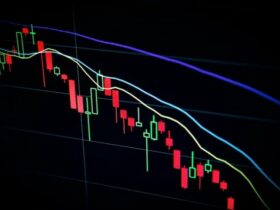In today’s data-driven world, understanding and interpreting data efficiently is a golden ticket to successful decision-making. As a critical component of business intelligence, visualizations simplify complex data and help organizations make informed decisions. Among the numerous types of visualizations, one that stands out for its ability to exemplify relationships between two sets of data is the scatter chart. But what is a scatter chart, and how can it be vital in businesses? Keep reading to learn more.
The Concept of a Scatter Chart

A scatter chart, known as a scatter plot or scatter diagram, is a plot utilizing Cartesian coordinates to depict the values of two variables for a set of data. Each data point is represented by a marker whose position depends on the values of these variables. It’s a valuable visualization tool in cases where you want to see if there’s a correlation between two variables, such as product sales against advertisements or site visitors against time spent on the site.
The power of a scatter chart resides in its ability to show relationships or correlations between two numerical variables. This characteristic enables businesses to visualize and understand the behavior of their operations, markets, workforce, and more. With the scatter chart, you can quickly identify trends, outliers, patterns, and clusters, which are imperative in making strategic business decisions.
Moreover, scatter charts are often used for comparing large amounts of data and visualizing potential trends. This comes in handy when dealing with big data and when modeling relationships within datasets. Given the vast amount of data businesses generate daily, scatter charts can provide valuable insights quickly, allowing data analysts or decision-makers to react promptly.
Where to Use Scatter Charts in Business
Scatter charts provide a versatile way of displaying information that can be of value in several fields. They can illuminate trends or provide a visual indicator of statistical significance, and this can benefit many areas of business. For example, scatter charts can be used in marketing to chart the correlation between spend and revenue, helping to identify the optimal spending level for maximum income. Businesses can also use them to visualize the relationship between customer reviews and sales or correlate employee performance with productivity or revenue increase.
Within financial analysis, scatter charts can depict the correlation between different financial variables or the relationship between a given stock and market trends. In this way, they can reveal patterns that could translate into investment or business opportunities. Similarly, companies can use scatter charts to visualize the link between their sales or output and any number of different variables, allowing them to pinpoint any factors that might be impacting their performance positively or negatively.
In operations, scatter charts can be used to understand the relationship between various operational variables. By pinpointing correlation, these charts can help businesses reduce inefficiencies, minimize costs, and improve overall operational performance. This might involve correlating delivery timings with customer satisfaction or looking at the connection between production levels and energy usage.
Ultimately, the scatter chart’s purpose is to help businesses understand relationships between different aspects better so that they can leverage insight-driven decisions to optimize their operations.
Scatter Charts VS Other Types of Graphs
Scatter charts, while potent, are just one tool in a sea of options, and it’s crucial to know when they’re the most appropriate to use. Unlike line graphs that depict trends over time or bar graphs that compare different categories, scatter plots excel in showing relationships between two numerical variables. They won’t provide much insight if you’re trying to demonstrate changes over time or if you’re trying to compare different categories. But if you’re trying to see if two numerical variables are related somehow, no other chart type will serve you better than a scatter plot.
This isn’t to say, however, that scatter plots can’t be used alongside other charts. Often, they are used as a supplement to other types of graphs. For example, you might first use a bar graph to showcase overall sales figures for different products and then a scatter plot to reveal if there’s a correlation between product price and sales. By understanding their strengths and limitations, you can select the visualization method that’s most suitable for your data and needs.
Overall, a scatter chart is a powerful data visualization tool well worth its inclusion in your business intelligence toolkit. A scatter chart offers unparalleled insights into the relationship between variables, trends, and patterns that would have otherwise remained unseen. By effectively leveraging scatter charts, businesses can gain invaluable insights from big data, giving them a competitive edge in today’s data-driven world.














Leave a Reply